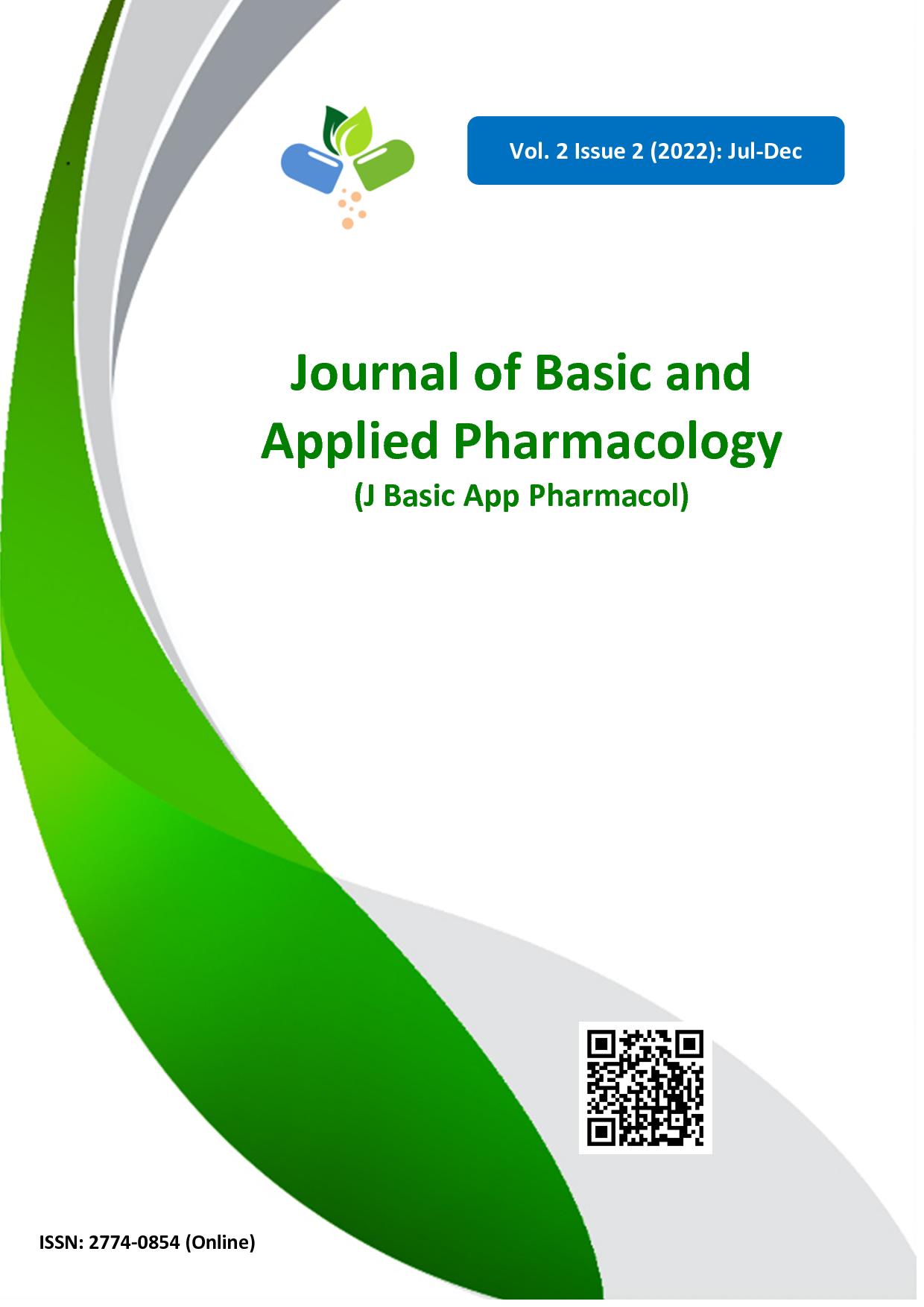An In-silico Study of Structure-based Virtual Screening of IDO1 Inhibitors as Candidate Compounds for Drug Development of IDO1-related Diseases
Main Article Content
Abstract
Indoleamine 2, 3-dioxygenase 1 (IDO1) is the rate-limiting enzyme of the kynurenine pathway and converts L-tryptophan to form N-formylkynurenine. IDO1 and its targeting pathways have been greatly implicated in immunomodulation and tumor development and more recently also neuroinflammation and neurodegeneration. Therefore, within the central nervous system (CNS), IDO1 and the kynurenine pathway play a role in a variety of conditions, including neurodegenerative diseases, neuropsychiatric disorders, and motor neuron diseases. The main mechanism whereby IDO1 and its pathway exert their effects in these conditions is mainly through the generation of excitotoxic metabolic byproducts downstream of the kynurenine pathway, such as quinolinic acid and kynurenic acid, with some being able to easily pass through the blood-brain barrier (BBB) and causing microglial activation, astrogliosis, oxidative stress and neuronal apoptosis. Therefore, this study aimed to find inhibitors for IDO1 to potentially be used in further therapeutic studies for different conditions. Using AutoDock Vina, docking scores and binding affinities of virtual screening compounds from the drug library on MTiOpenScreen were acquired. Compounds with the highest scores and binding affinities were selected and screened from the drug library to perform molecular docking and 2D-plot analysis with IDO1. Further screening was based on Lipinski’s rule of five and seganserin was found to be the overall most appropriate inhibitor from the drug library for IDO1 with BBB permeability. Upon further comparison with its related enzymes, namely indoleamine 2,3-dioxygenase 2 (IDO2) and tryptophan 2,3-dioxygenase (TDO) via molecular docking, it was found that binding affinity to seganserin was highest for IDO1.
Article Details

This work is licensed under a Creative Commons Attribution-NonCommercial-NoDerivatives 4.0 International License.
Upon acceptance of an article, the Pharmacological and Therapeutic Society of Thailand will have exclusive right to publish and distribute the article in all forms and media and grant rights to others. Authors have rights to use and share their own published articles.
References
Ting KK, Brew BJ, Guillemin GJ. Effect of quinolinic acid on human astrocytes morphology and functions: implications in Alzheimer's disease. J Neuroinflammation. 2009;6(1):36.
Badawy AAB, Bano S. Tryptophan metabolism in rat liver after administration of tryptophan, kynurenine metabolites, and kynureninase inhibitors. Int J Tryptophan Res. 2016;9:51-65.
Guillemin GJ, Cullen KM, Lim CK, Smythe GA, Garner B, Kapoor V, et al. Characterization of the kynurenine pathway in human neurons. J Neurosci 2007;27(47):12884-12892.
Duan Z, Zhang S, Liang H, Xing Z, Guo L, Shi L, et al. Amyloid β neurotoxicity is IDO1–Kyn–AhR dependent and blocked by IDO1 inhibitor. Signal Transduct Target Ther. 2020;5(1):96.
Tang K, Wu Y-H, Song Y, Yu B. Indoleamine 2,3-dioxygenase 1 (IDO1) inhibitors in clinical trials for cancer immunotherapy. J Hematol Oncol. 2021; 14(1): 68.
Prendergast GC, Malachowski WP, DuHadaway JB, Muller AJ. Discovery of IDO1 inhibitors: from bench to bedside. Cancer Res. 2017;77(24):6795-6811.
Maia EHB, Assis LC, de Oliveira TA, da Silva AM, Taranto AG. Structure-based virtual screening: from classical to artificial intelligence. Front Chem. 2020;8.
Trott O, Olson AJ. AutoDock Vina: improving the speed and accuracy of docking with a new scoring function, efficient optimization, and multithreading. J Comput Chem. 2010;31(2):455-461.
Labbé CM, Rey J, Lagorce D, Vavruša M, Becot J, Sperandio O, et al. MTiOpenScreen: a web server for structure-based virtual screening. Nucleic Acids Res. 2015;43(W1): W448-W454.
Daina A, Michielin O, Zoete V. SwissADME: a free web tool to evaluate pharmacokinetics, drug-likeness and medicinal chemistry friendliness of small molecules. Sci Rep. 2017;7(1):42717.
Pettersen EF, Goddard TD, Huang CC, Couch GS, Greenblatt DM, Meng EC, et al. UCSF Chimera--a visualization system for exploratory research and analysis. J Comput Chem. 2004;25(13):1605-1612.
Stierand K, Rarey M. PoseView -- molecular interaction patterns at a glance. J Cheminformatics. 2010;2(1):50.
Hewitt DJ, Aurora SK, Dodick DW, Goadsby PJ, Ge Y, Bachman R, et al. Randomized controlled trial of the CGRP receptor antagonist MK-3207 in the acute treatment of migraine. Cephalalgia. 2011;31(6):712-722.
Salvatore CA, Moore EL, Calamari A, Cook JJ, Michener MS, O'Malley S, et al. Pharmacological properties of MK-3207, a potent and orally active calcitonin gene-related peptide receptor antagonist. J Pharmacol Exp Ther. 2010;333(1):152-160.
Serafini M, Torre E, Aprile S, Grosso ED, Gesù A, Griglio A, et al. Discovery of highly potent benzimidazole derivatives as indoleamine 2,3-dioxygenase-1 (ido1) inhibitors: from structure-based virtual screening to in vivo pharmacodynamic activity. J Med Chem. 2020;63(6):3047-3065.
Ge H, Mao L, Zhao J, Wang Y, Shi D, Yang X, et al. Discovery of novel IDO1 inhibitors via structure-based virtual screening and biological assays. J Comput Aided Mol Des. 2021;35(5):679-694.
Prendergast GC, Malachowski WJ, Mondal A, Scherle P, Muller AJ. Indoleamine 2,3-dioxygenase and its therapeutic inhibition in cancer. Int Rev Cell Mol Biol. 2018;336:175-203.


